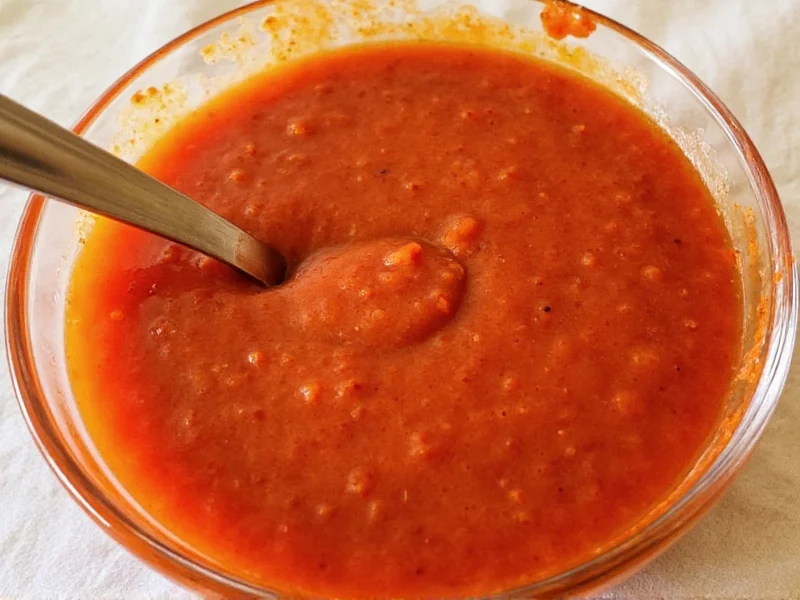Understanding what is mojo sauce requires exploring its rich culinary heritage and distinctive flavor profile. This versatile sauce has journeyed from its Canary Islands roots to become a staple in Caribbean and Latin American kitchens, evolving through cultural exchange while maintaining its essential character.
Historical Origins and Cultural Significance
Mojo sauce traces its origins to Spain's Canary Islands, where it emerged as a culinary adaptation of North African ajos or garlic sauces brought by Moorish influences. The name "mojo" likely derives from the Portuguese word "molho," meaning sauce. When Spanish settlers migrated to the Caribbean, particularly Cuba and Puerto Rico, they brought this sauce tradition with them.
Over time, what is traditional mojo sauce transformed through ingredient availability and cultural fusion. In Cuba, it became essential for lechón asado (roast pork), while Puerto Rican variations incorporated local ingredients like bitter orange. The sauce's evolution demonstrates how culinary traditions adapt while preserving core elements that define their identity.
Core Ingredients and Flavor Profile
The foundation of authentic mojo sauce rests on several key components that create its signature taste. Understanding what is mojo sauce means recognizing these essential elements:
| Ingredient | Function | Traditional Amount |
|---|---|---|
| Fresh garlic | Primary flavor base | 6-10 cloves per cup of sauce |
| Olive oil | Carries flavors, creates emulsion | 1/2 cup |
| Vinegar or citrus juice | Acidity, balance | 1/4 cup |
| Cumin | Earthy warmth | 1 tsp |
| Oregano | Herbal note | 1/2 tsp |
The resulting flavor profile features a bold garlic presence balanced by acidity, with earthy cumin notes and herbal undertones. Unlike many commercial sauces, traditional mojo isn't creamy but rather an emulsified liquid that clings to food. The texture should be smooth yet substantial enough to coat ingredients thoroughly.
Regional Variations Across Cultures
While the Canary Islands version remains the original, regional adaptations have created distinctive interpretations of what is mojo sauce:
Canary Islands Mojo
The original Canarian mojo features two primary versions:
- Mojo rojo (red sauce): Contains paprika for color and mild heat
- Mojo verde (green sauce): Includes cilantro or parsley for freshness
These versions traditionally accompany papas arrugadas (wrinkled potatoes) and fish dishes.
Cuban Mojo Criollo
Cuban adaptation, often called mojo criollo, typically uses sour orange juice instead of vinegar, creating a distinctive citrus note. This version frequently includes onion and sometimes bell pepper, reflecting Caribbean ingredient availability. Cuban mojo serves as the essential marinade for lechón asado (Cuban roast pork), where it tenderizes and flavors the meat over extended marinating periods.
Puerto Rican Variations
Puerto Rican mojo often incorporates culantro (recao) and may feature achiote for color. Some versions include small amounts of tomato, creating a slightly thicker consistency than the Canarian original. The Puerto Rican interpretation demonstrates how what is traditional mojo sauce adapts to local preferences while maintaining its essential garlic-forward character.
Preparation Techniques and Culinary Applications
Creating authentic mojo sauce requires attention to preparation methods that maximize flavor development. The traditional approach involves:
- Mincing or crushing fresh garlic to release allicin (the compound responsible for garlic's flavor)
- Combining with vinegar or citrus juice to create a garlic infusion
- Slowly whisking in olive oil to create an emulsion
- Adding spices and allowing flavors to meld for several hours
Unlike many sauces that improve with cooking, authentic mojo sauce is always prepared raw to preserve the fresh garlic flavor. The acid component (vinegar or citrus) "cooks" the garlic through a process called enzymatic reaction, developing complex flavors without heat.
Culinary applications for mojo sauce extend beyond its traditional role as a pork marinade. Chefs use it as:
- A vibrant salad dressing when thinned with additional citrus
- A dipping sauce for plantains, yuca, or bread
- A flavor base for rice dishes
- A finishing sauce drizzled over grilled vegetables
- An ingredient in mayonnaise blends for sandwiches
Common Misconceptions About Mojo Sauce
Several misunderstandings persist about what is mojo sauce:
- Mojo is not a hot sauce: While some variations include chili peppers, traditional mojo focuses on garlic and citrus rather than heat
- It's not mayonnaise-based: Unlike aioli, authentic mojo contains no egg yolks
- Mojo criollo differs from standard mojo: Cuban mojo criollo specifically refers to the citrus-based variation
- It's not exclusively Cuban: Though popular in Cuban cuisine, its origins are Canarian
Understanding these distinctions helps clarify what is traditional mojo sauce versus regional adaptations that have developed over time.
Storage and Shelf Life Considerations
Due to its fresh ingredients, homemade mojo sauce has specific storage requirements. When properly prepared and stored in an airtight container:
- Fresh mojo maintains optimal flavor for 3-4 days refrigerated
- The garlic flavor intensifies over the first 24 hours
- Separation is normal; simply shake or whisk before use
- Freezing is not recommended as it alters the emulsion
Commercial versions often contain preservatives that extend shelf life but typically sacrifice the vibrant fresh garlic flavor that defines authentic what is mojo sauce.











 浙公网安备
33010002000092号
浙公网安备
33010002000092号 浙B2-20120091-4
浙B2-20120091-4